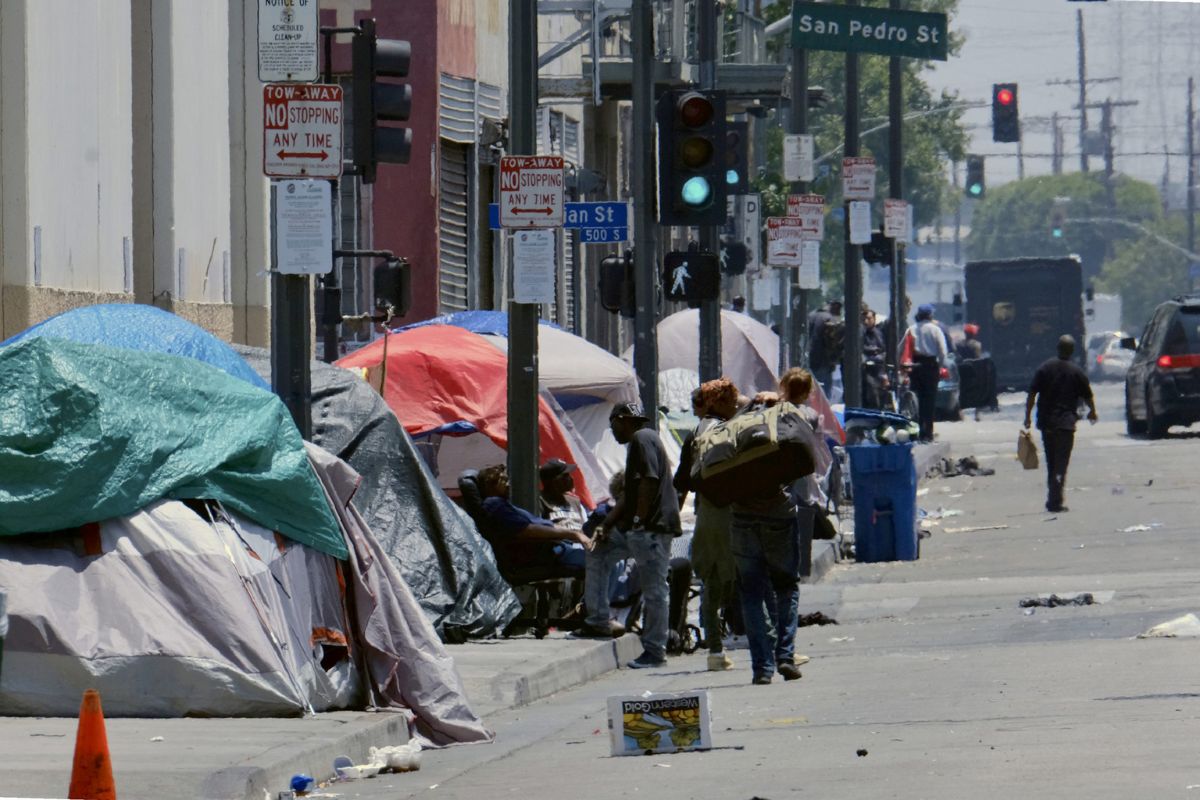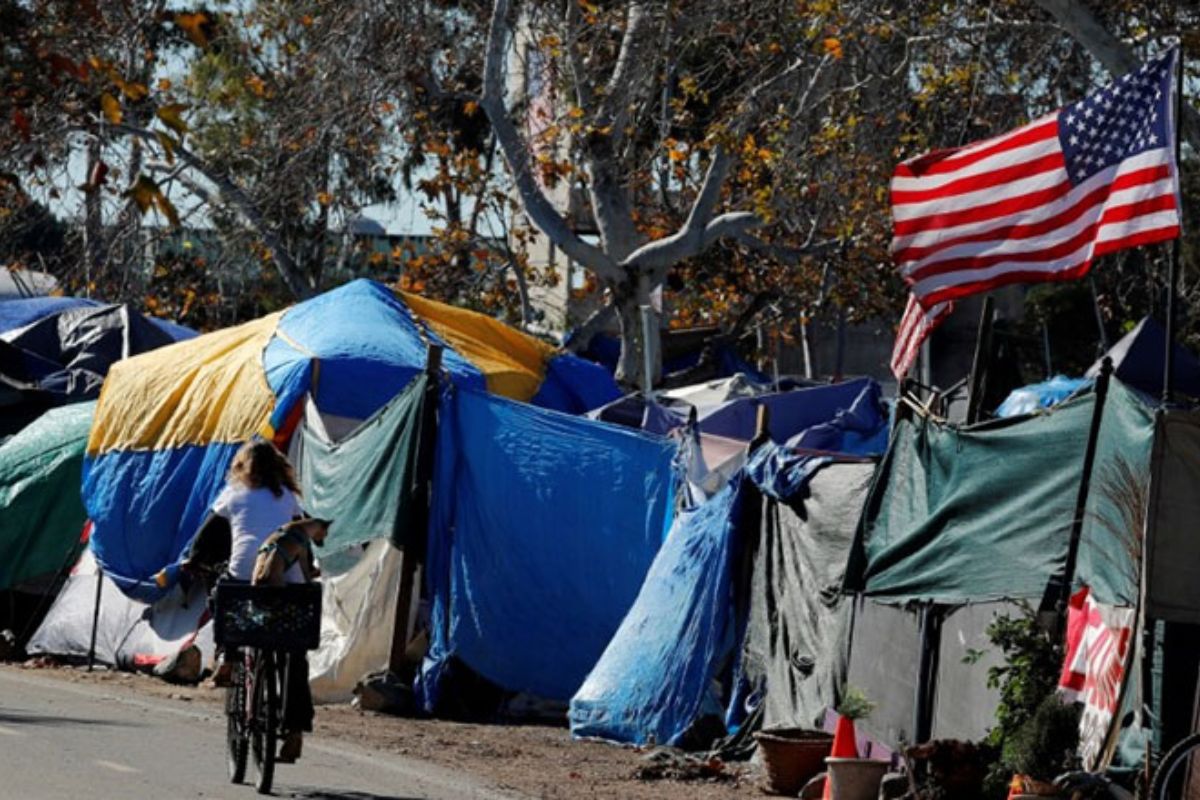The Dark Side of California: California’s economic landscape showcases stark disparities. Job growth struggles at a meager 0.87% while other states flourish. Unemployment rates remain stubbornly above 5%, unlike Florida and Texas. Housing crisis worsens due to stringent regulations, pushing homes out of reach for many. Energy costs soar under heavy taxes, impacting competitiveness. Massive homeless population discolors cities like San Francisco and Los Angeles. Middle class faces disenfranchisement, blamed on leadership favoritism. California’s allure fades amidst rising social challenges and policy failures. The shadowy side of this paradise reveals a complex web of issues threatening its prosperity and livability.
Economic Disparities Across States: Job Growth and Unemployment Rates
Examining the divergent trajectories of job growth and unemployment rates across states reveals stark disparaties in economic performance. While the nation saw significant job growth of 2.7 million and unemployment rates below 4% in the past year, California’s economic landscape presents a contrasting picture. States like Florida and Texas boasted robust workforce expansions of 3.4% and 3.3%, respectively, showcasing vibrant economic activity. In comparison, California struggled with a meager job growth rate of just 0.87%, highlighting significant underperformance.
Moreover, California’s persistent unemployment rate remaining above 5% exacerbates the state’s economic challenges. The disparity in job creation between California and states like Florida and Texas underscores the need for a closer examination of the factors inhibiting California’s economic vitality. While some regions thrive, California appears to be grappling with hurdles that hinder its ability to keep pace with the national economic momentum.
These discrepancies in job growth and unemployment rates not only reflect varying economic policies and business environments across states but also shed light on the unique challenges faced by California. Understanding these disparities is vital for policymakers and stakeholders in devising targeted strategies to bolster California’s economic growth and competitiveness in the broader landscape of the United States.
California Economic Struggles: Housing Crisis and Policy Impact
California’s economic challenges, particularly its housing crisis and the policy impact, have become glaring issues that demand thorough analysis and strategic intervention. The state’s housing crisis is multifaceted, with excessive environmental regulations being a notable hindrance to new home construction. This has further worsened the affordability crisis, particularly evident in cities like San Francisco, where the median-priced home necessitates a staggering household income of $400,000 – a figure well beyond the actual median income of $136,000. The disparity between housing costs and income levels is unsustainable and points to systemic issues that require urgent attention.
Democratic governance in California has come under scrutiny for its role in making policy decisions that have exacerbated the housing crisis. Critics argue that poor policy choices have contributed significantly to the challenges faced by residents in finding affordable housing. The need for a thorough reassessment of existing policies and the implementation of new, more effective strategies is evident.
Addressing California’s housing crisis necessitates a holistic approach that considers not only the immediate affordability issues but also the underlying regulatory and policy frameworks that have led to the current situation. Without decisive action and a commitment to reform, the economic struggles stemming from the housing crisis are likely to persist, casting a shadow over the state’s overall economic landscape.
Energy Costs and Infrastructure Neglect: Impacts on Economic Competitiveness
Amidst California’s economic landscape, the impact of high energy costs and infrastructure neglect on economic competitiveness looms large, presenting formidable challenges that demand immediate attention and strategic solutions. High energy costs in California further burden the economy, primarily fueled by state regulations and taxes. Gas prices, ranking among the nation’s highest, inflate transportation and manufacturing expenses, reducing the state’s attractiveness for businesses. Additionally, infrastructure neglect exacerbates these challenges, with deteriorating roads and misplaced priorities such as the unfinished high-speed train project hindering economic growth and efficiency.
To visualize the magnitude of the issue, consider the following table:
| Aspect | Impact | Consequences |
|---|---|---|
| High Energy Costs | Increased expenses for businesses | Reduced competitiveness in the market |
| Infrastructure Neglect | Hindered transportation and logistics | Higher costs and inefficiencies in operations |
| Unfinished Projects | Wasted resources and funds | Diminished trust in government’s ability to execute plans |
The combination of high energy costs and infrastructure neglect not only burdens businesses with higher operational expenses but also diminishes the state’s overall economic competitiveness. Immediate action is imperative to address these challenges and pave the way for a more robust and sustainable economic future in California.
Homelessness and Social Decline: Effects on Livability and Business
The surge in homelessness and social deterioration in California’s urban centers is casting a shadow over the region’s livability and economic viability.
California harbors the largest homeless population in the United States, with cities like San Francisco and Los Angeles bearing the brunt of this crisis. The presence of filthy open-air drug markets and the proliferation of unlivable neighborhoods not only repel residents but also drive businesses away. This deteriorating social fabric not only tarnishes the state’s image but also contributes to the overall decline in economic vibrancy.
The ramifications of this predicament are profound.
The once-thriving urban landscapes now grapple with issues that extend beyond just economic concerns. The very essence of livability is under threat, as residents face safety concerns and businesses confront the harsh reality of operating in environments plagued by social decay. As businesses reconsider their presence in these areas, the outflux of economic activity further exacerbates the situation, creating a vicious cycle of decline.
Efforts to address these challenges require a multi-faceted approach that explores the root causes of homelessness and social decline.
Without decisive action and all-encompassing strategies, California risks further erosion of its livability and economic vitality. The time to confront these issues head-on is now, as the future of the state’s urban centers hangs in the balance.
Future Outlook and Leadership Impact: Gated Prosperity vs. Middle-Class Decline
In the shifting landscape of economic opportunity in California, the juxtaposition between gated prosperity and middle-class decline is becoming increasingly stark. Despite California’s allure and natural beauty, the state’s middle class is grappling with economic disenfranchisement. The current Democratic leadership in Sacramento faces criticism for perpetuating policies that prioritize the interests of the affluent, leading to a widening gap between the haves and the have-nots.
The policies favoring gated prosperity not only exacerbate income inequality but also hinder the prospects of upward mobility for the middle class. As the cost of living continues to soar, many hard-working Californians find themselves struggling to make ends meet, facing housing instability, and limited access to essential services. This trend not only threatens the economic well-being of the middle class but also undermines the social fabric of the state.
Without significant shifts in leadership and policy direction, the California dream risks becoming a distant mirage for the middle class. It is imperative for the state’s leadership to address these disparities, prioritize the needs of all Californians, and work towards creating a more inclusive and equitable economic landscape. Failure to do so may result in long-lasting consequences for the state’s social cohesion and economic stability.
ALSO READ: Race for Kevin McCarthy Seat: Fong, Boudreaux Head to Runoff, AP Predicts!
News in Brief
California’s economic landscape reveals stark disparities as job growth lags at 0.87%, contrasting with thriving states like Florida and Texas. Unemployment rates above 5% persist, while housing becomes increasingly unaffordable due to stringent regulations. High energy costs and neglected infrastructure hinder competitiveness, compounded by a massive homeless population tarnishing urban centers. Middle-class disenfranchisement underscores leadership failures, favoring gated prosperity over broader societal well-being. California’s allure dims amidst rising social challenges and policy failures, threatening prosperity and livability. Urgent reforms are needed to address these complex issues and revive the state’s economic vitality.



